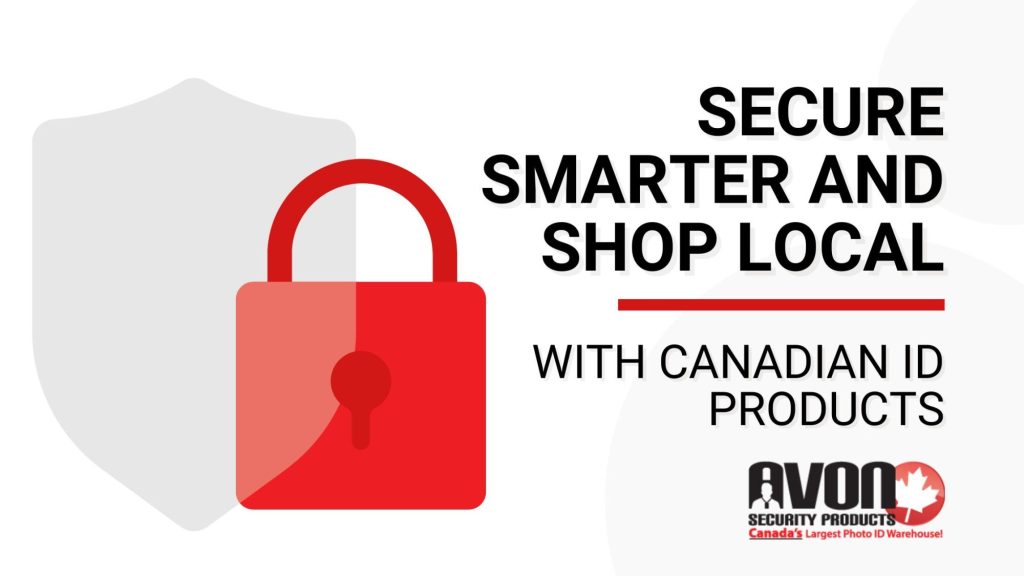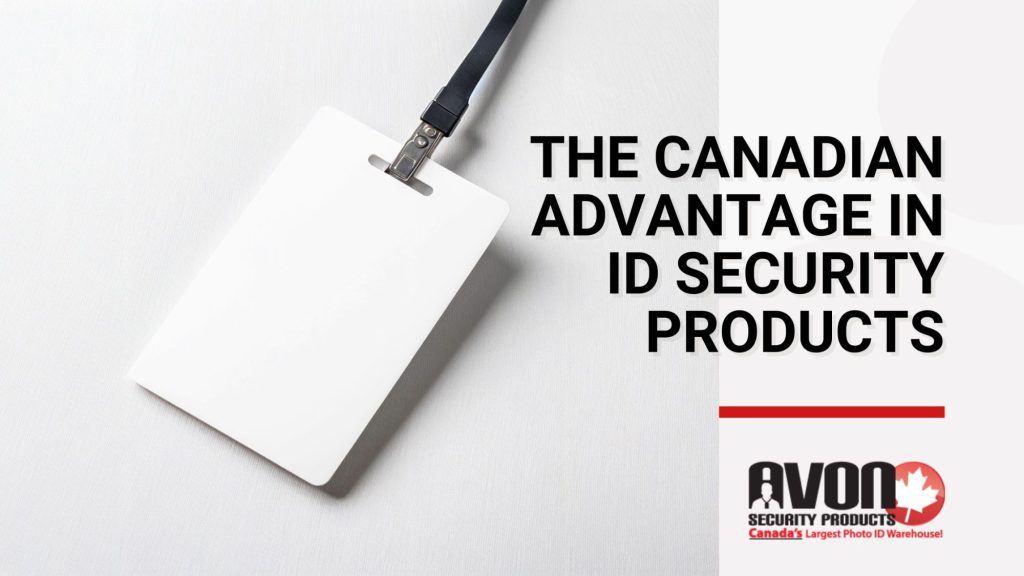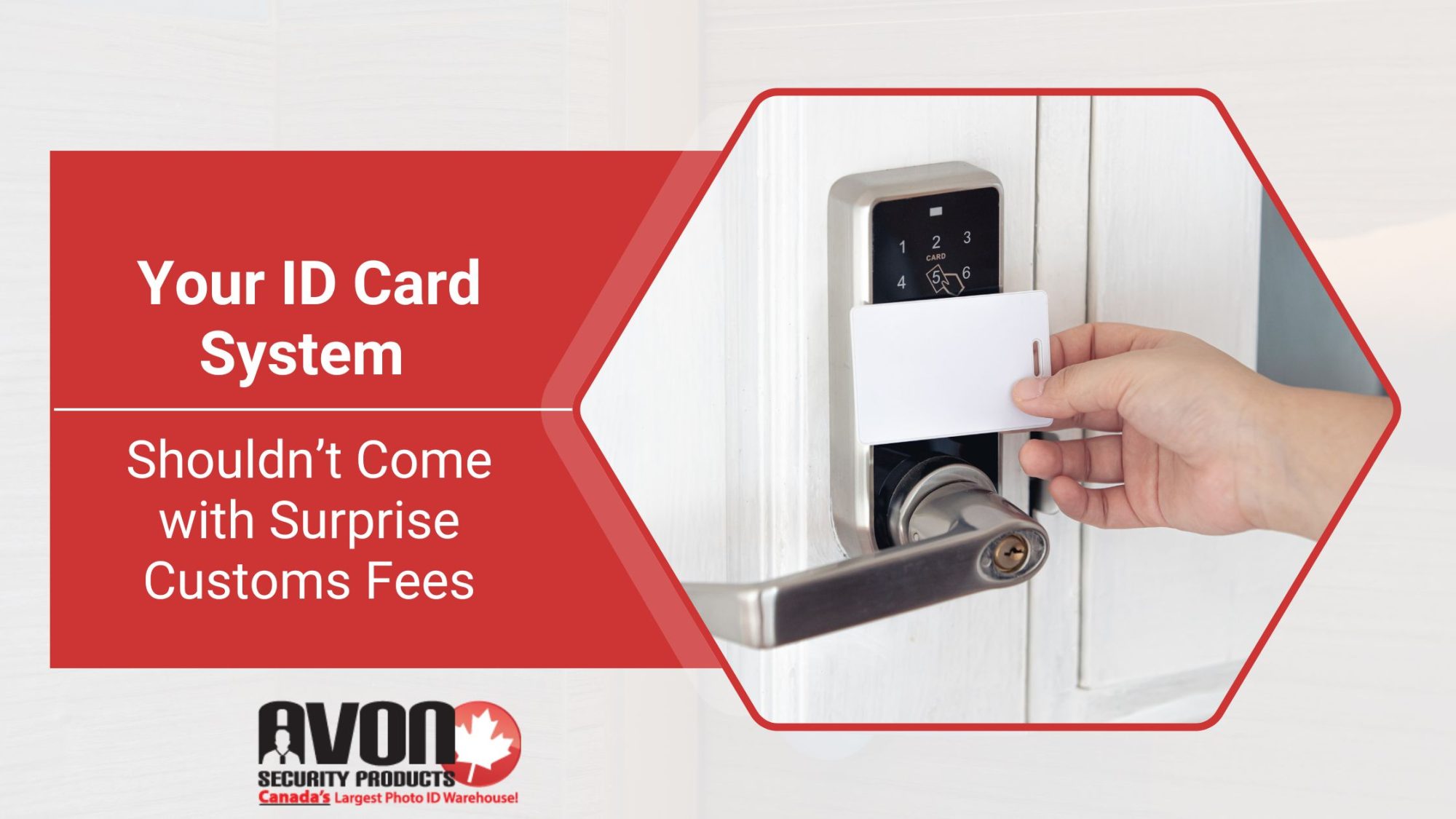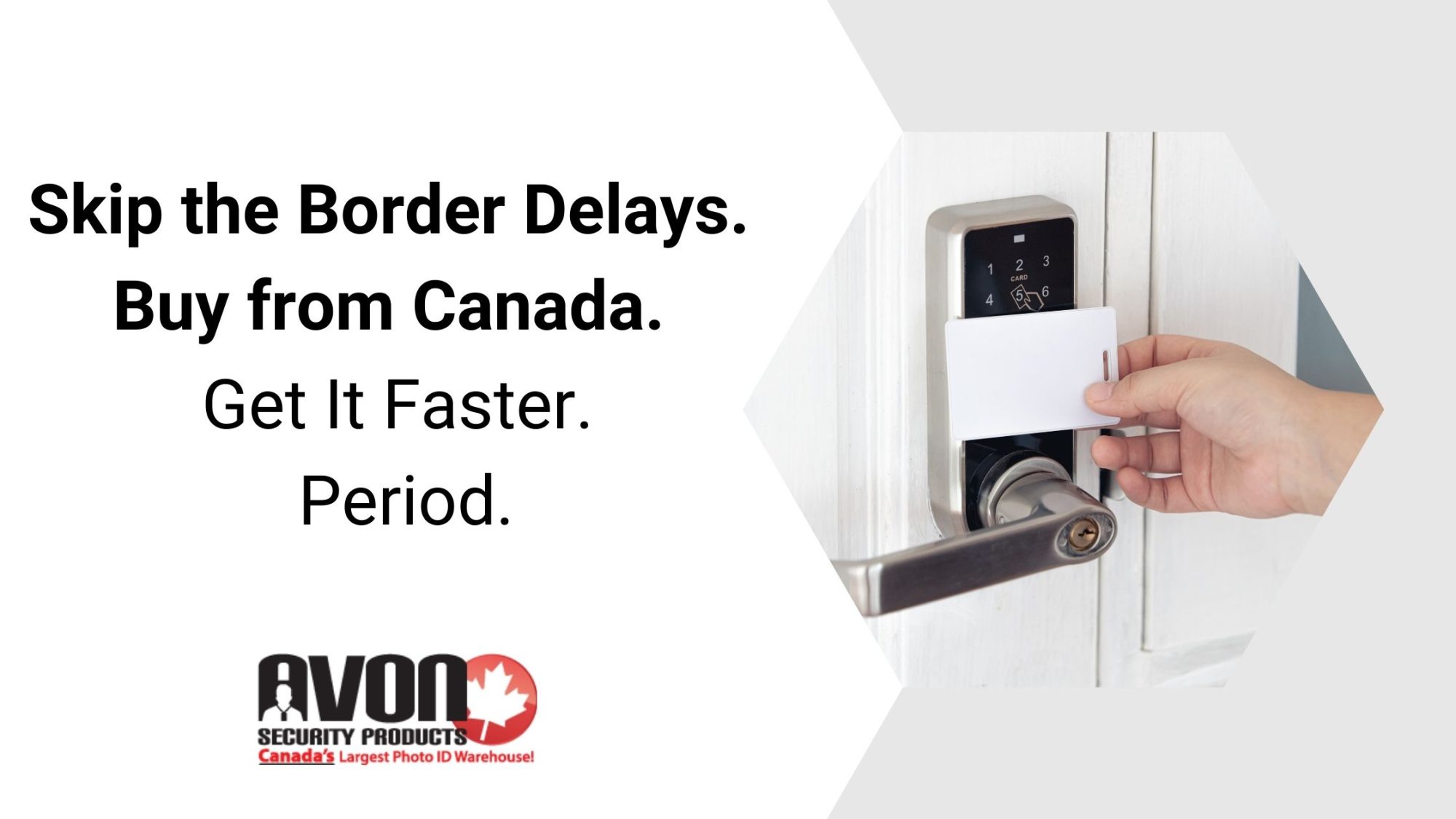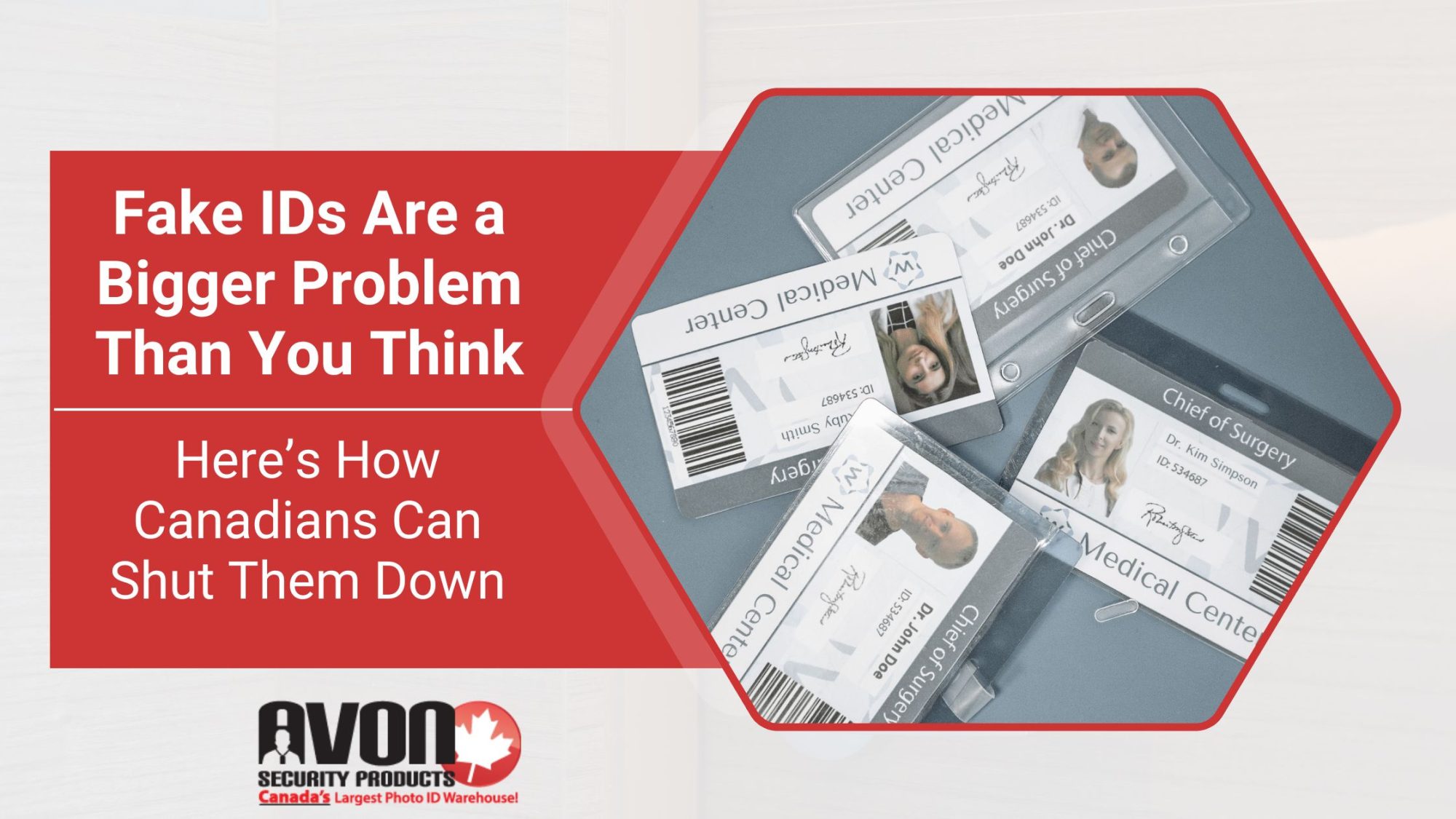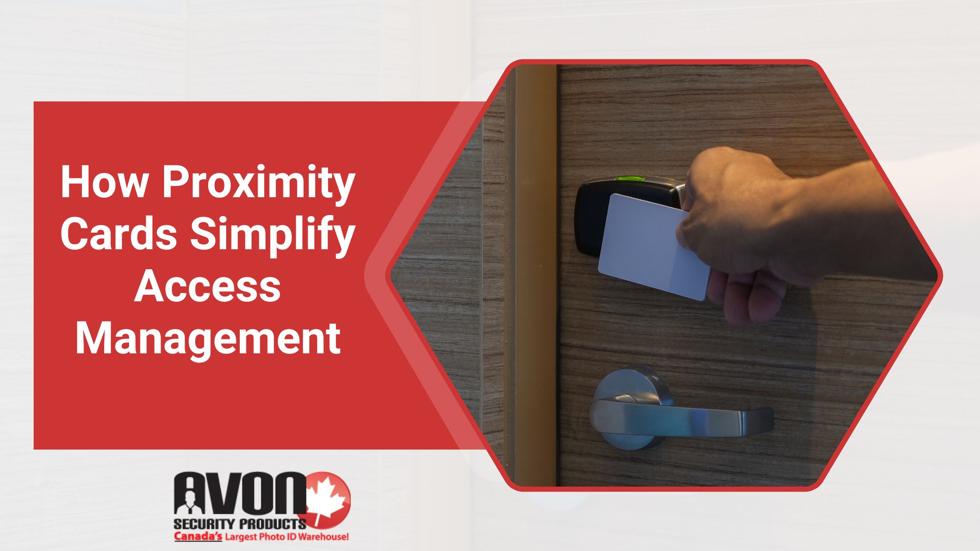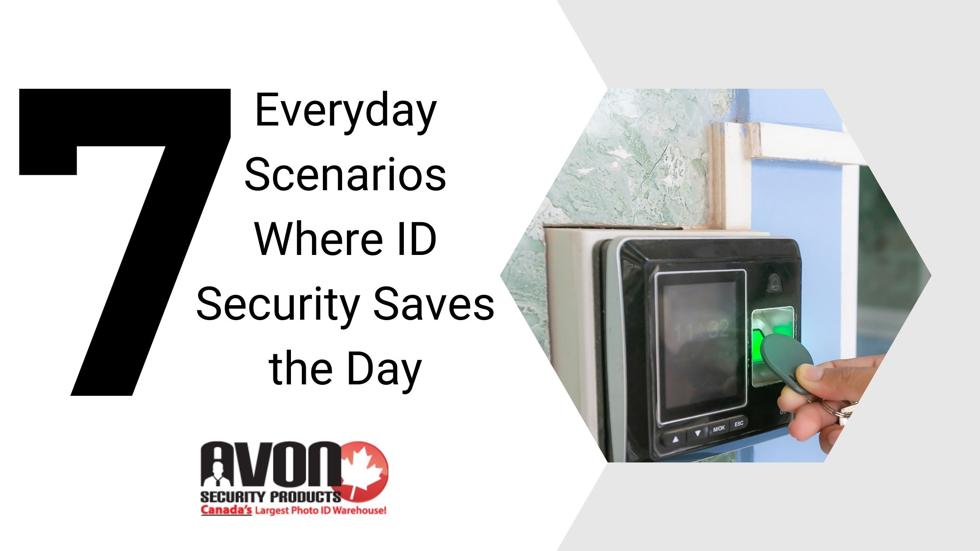Investing in identity and access control means choosing reliable, adaptable systems that scale with your organization. For Canadian businesses, schools, and government agencies, sourcing ID products locally enhances both security outcomes and service reliability. At Avon Security Products, a trusted Canadian supplier, we offer comprehensive solutions tailored to national compliance standards and operational needs.
Here are the components of a modern identification ecosystem and how we help organizations secure smarter right here in Canada.
ID Card Printer Systems and Equipment
An effective identification program begins with dependable ID card printer technology. We provide a curated range of ID card printers from leading manufacturers, including Evolis, HID Fargo, Zebra, and Magicard. Whether you’re printing basic photo IDs or advanced smart cards with embedded chips, our printers meet various volume, durability, and encoding requirements.
From single-sided printers for schools and small businesses to dual-sided, high-resolution models for federal agencies and healthcare networks, each unit is selected for its reliability, print quality, and integration potential. Avon also offers printer bundles that include software, blank cards, ribbons, and camera kits, streamlining your setup process.
Identification and Access Solutions
The role of identification goes beyond issuing a physical card. Avon’s range of solutions supports access control, time and attendance tracking, and secure visitor management. These offerings include:
- Proximity and smart ID card systems
- Badge readers
- Mobile credentials
- Multi-factor authentication tools
With these systems, your organization can create layered access permissions, monitor entry points in real time, and automate compliance reporting. If you’re safeguarding confidential medical records or managing employee access across multiple sites, our solutions align with privacy and security standards mandated in Canada.
Industry Applications
Different sectors face different challenges, and our product line reflects this reality. In healthcare, ID badges with integrated barcode and RFID functions improve patient safety and medication tracking. In education, student and staff cards help streamline attendance, meal programs, and campus access.
Government agencies benefit from tamper-resistant cards and encrypted credentials, while corporate offices enhance operational control with unified access systems. For retail and hospitality, loyalty cards and branded photo IDs support both security and customer engagement. Our products and services are scalable, allowing you to adapt as your operational footprint grows.
Software and Integration
Card issuance software is central to a seamless ID management process. We offer industry-leading platforms, such as CardPresso and Asure ID, that enable users to design, encode, and print secure credentials efficiently. These platforms support a range of databases and operating systems, making integration with HR software, visitor logs, and security systems straightforward.
Also, cloud-based options are available for organizations managing credentials across multiple locations. With features like batch printing, biometric data storage, and audit trail capabilities, our software offerings empower teams to work smarter without compromising security.
Supplies and Accessories
We stock a full inventory of ribbons, cleaning kits, blank cards, lanyards, ID card holders, clips, and retractors. Genuine OEM products ensure optimal performance and longevity of your equipment.
Whether you’re restocking monochrome ribbons for daily student badge printing or ordering holographic laminate overlays for high-security environments, we ensure rapid delivery across Canada. Volume discounts and bundled accessory kits provide added value for institutions with ongoing ID issuance needs.
Support and Services
A secure investment requires dependable service. Our Canadian-based support team offers installation assistance, software training, troubleshooting, and maintenance packages. With both remote and on-site support options, you receive prompt help from technicians who understand local regulations and infrastructure.
For businesses unsure about their requirements, Avon also provides consultations to evaluate existing systems and recommend tailored upgrades. Post-sale support includes warranty handling, repair coordination, and access to updated drivers and firmware, all backed by a dedicated customer service team.
Local Advantage, National Impact
Avon Security Products helps organizations across Canada build secure, scalable ID systems while supporting the national economy. From high-volume healthcare environments to small businesses issuing staff badges, we deliver solutions that prioritize functionality, security, and local service excellence.
Secure smarter. Shop local. Choose Avon Security Products for Canadian identification solutions that protect your people, premises, and peace of mind.

